Overview
You ever caught yourself staring at something and just wondering…where did it all start? Like…mousetraps or honey fly traps.
But today’s dose of genius will be solely about ski lifts, though! You could say they are traps of sorts…if you think about it! They have a failsafe method of securing and fastening us in, and somehow, once we’re on them, we can’t get off until or until the ‘trap’ decides we’re free.
Nah! I’m just messing with you guys!
Ski lifts have had a tumultuous changing history of revolution and reinvention since their early introduction into the sports world in the 1930s. Let’s talk a bit about that now, shall we?
History of Ski Lifts

James Curran, an engineer working at Union Pacific in the 1930s, was the mastermind behind bringing to life one of the first models of a chair lift that we now come to know as a ski lift. In the start, these said ski lifts were very…as you could say…raw.
Without any sort of protective bars at the front for the rider to hold on to, the seats were wooden and tough, and fancy was absolutely not the first word that came to mind when you would think of them.
Moreover, these little threadbare chairlifts barely operated higher than button lifts and functioned pretty close to the ground.
It was in 1940 when the manufacture of ski lifts became industrialized and different models came through with varying levels of protection, different styles, and designs.
Different Types of Ski Lifts
Mentioned below are the different types of ski lifts.
Poma or Drag Lift
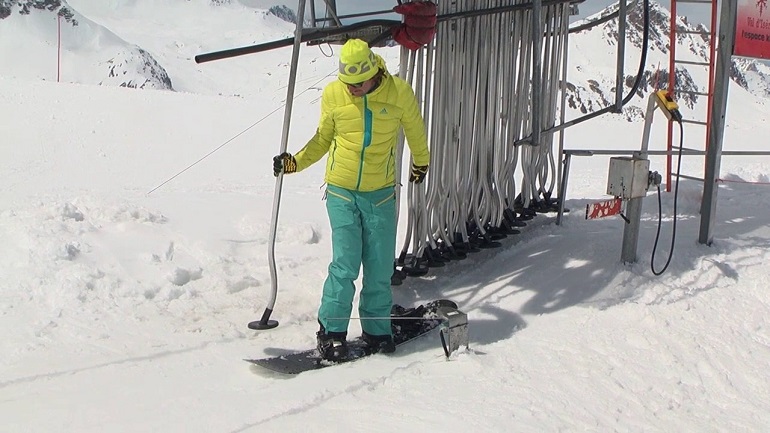
Drag lifts are designed to house only a single person but are pretty high-speed chairlift and travel short distances in the blink of an eye. I would confidently say that it takes a bit of getting used to it because of how recklessly daredevil it can get.
Don’t worry, though, if you can’t find the urge to complete one trip, it took me 3 months to actually train myself not to throw up during take-off.
So, wherever you may stand in your level of courage and bravery to have a go at the drag lift…you’re good to go. A word of advice to take with you anywhere you go on this lift…always hold on to something.
Gondola

The name originates from Italian culture, this aerial lift has a system of cable suspension, and most of the whole system is situated between intermediate supporting towers to maintain the weight and heas of it all.
Its technology is fairly easy to understand as once you reach your end station, there is a clamp hovering over the rail, waiting for your trip to come to an end. Once it does, the clamp’s jaws instinctively open and are caught by a moving chain.
The chain basically picks up the gondolas (the seats you and others have been seated in as the whole thing went) and transports them back to the start of the track.
This whole process involves slow speeds and is smooth and comfortable in the manner that you will barely feel any big difference. It makes loading and unloading fairly easy and safe.
Chair Lift

This one is very similar to the ski left; however, it only differs in its seating arrangement, where there are actual chairs for you to rest in and travel safely. Each chair is suspended from a steel cable that it holds on to with a mechanical grip and constantly moves.
There are fixed grip lifts and ones with detachable chairlift technology. You can enjoy your rides while appreciating beautiful vistas on ski lift available at the ski resorts in New Mexico.
It is popular in mountainous regions where not everyone has the capability or energy to travel up and down the rocky plains and cliffs. The chair lift is particularly famous among new skiers who love to zoom downhill but loathe the idea of actually making the climb themselves with their skis on.
As the seating arrangement is convenient, it doesn’t require them to take off their skis (which is a tough task). A strong and well-managed mechanical system of technologies is used to stabilize and keep the chair lifts in their place.
Hybrid Gondola & Chair Lift
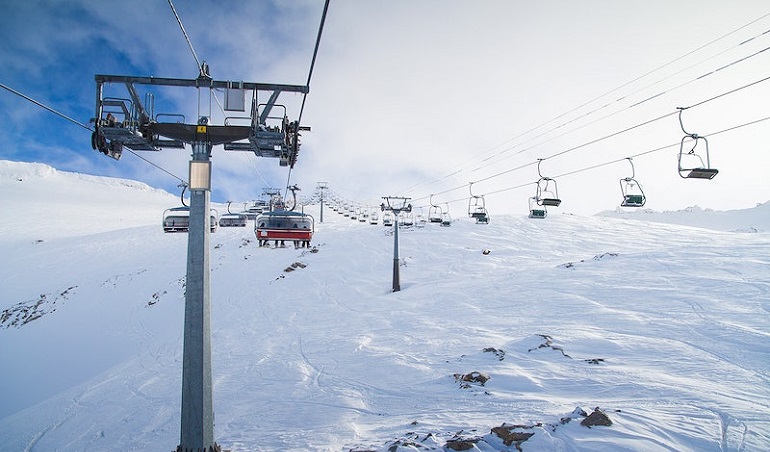
Known for giving their riders the best of both worlds, these Hybrid lifts are sometimes called Chondolas as they incorporate the best features of both chair lifts and Gondolas. Taking from the Gondola tradition, this type of ski lift is famous for protecting the riders from being directly exposed to the elements.
By providing a little safe haven, such as a spherical dome box to sit within as you watch the world outside, chondolas will always have that advantage that attracts everyone.
On the other hand, just like chair lifts are easy to ride and board and exit, chondolas take on after that too. So consider yourself blessed if you manage to get a ride on one of these.
Cable Cars/Aerial Tramways
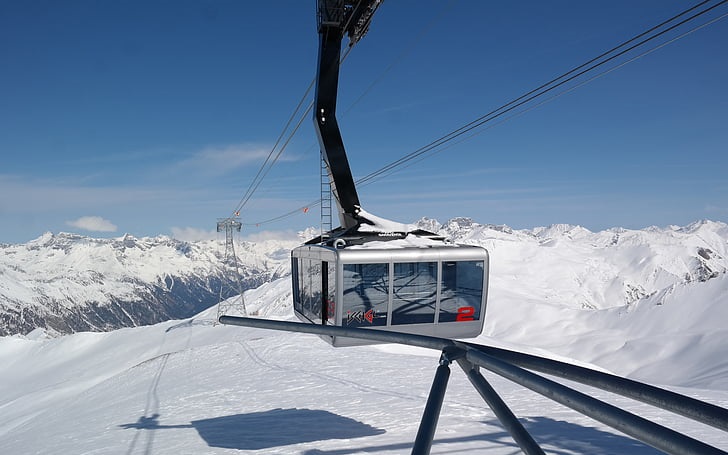
The aerial ski tramway is known as the most popular and frequently used form of transportation for commuting between low and high regions. Not just that, but they are also even used in transferring raw materials for construction up in the Northern areas with the mountains.
The system is composed of strong ropes that hike up and down a tramway cabin which is basically the box that either humans or material is transported in. In each scenario, the cabin is fastened very well with a propulsion rope that is incapable of snapping, separating, or loosening.
Nevertheless, they aren’t preferred by the masses as it is said they aren’t as high-speed or spacious as Gondolas and can only go up and down (not turn corners). However, modern-day tramway cabins have been upgraded to double-decker options that can hold up to 200 people at once.
T-Bar and Button Lift
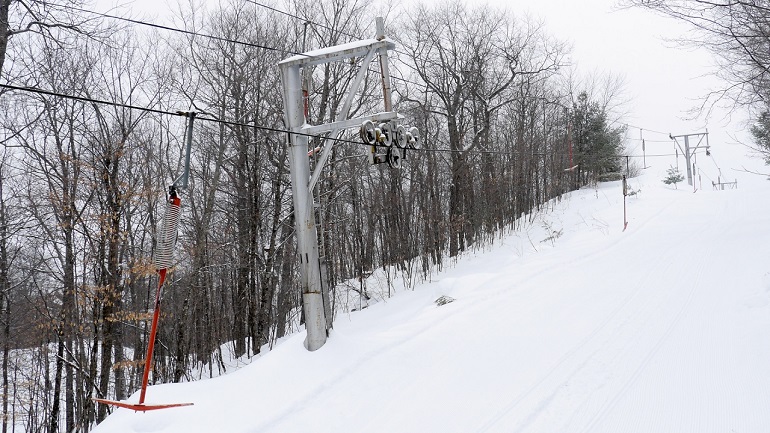
These are a pretty outdated type of transport in the mountains as most of the time, you’ll see that where T bar lifts or button lifts were used, a Gondola or a Chondola has taken their place.
But, these T bars work by the riding passenger holding on to the ski lift either by the lift’s rear end or with their legs. Thus when the looping steel cable moves the lift, the passenger is also moved and transported.
If you do find these around, it’ll probably be around novice ski areas where a sizable elevation isn’t present.
Heliski
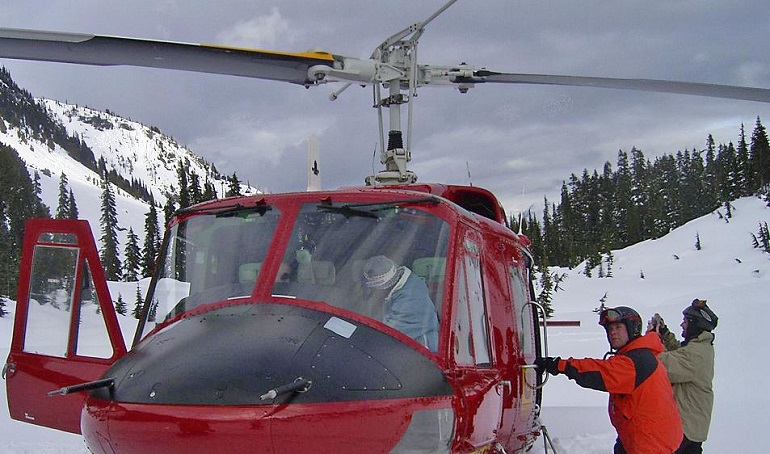
Well, how much more obvious can this one be? Heli-copter-skiing is an expensive and slightly unconventional type of lift that involves using a helicopter or a chopper to make your way downhill on the slopes.
This activity is mainly not considered a type of ski lift like the other options but more so a form of backcountry skiing or free riding.
It is very demanding for the skier who wishes to indulge in it as it requires you to be in tip-top health and mental shape. And as much as it sounds like hell skiing…it’s fun and enjoyable for those who don’t mind a challenge or two.
How Does a Ski Lift Decelerate?
A modern-day ski or chair lift utilizes gears to ensure that the typical speed it descends with is not the same one that it was zooming here and there transporting you with.
Older aerial lifts may be a bit more uncomfortable in this aspect as the sudden impact on the ground or landing spot does send shockwaves and a rolling impact through the riders.
Detachable chairlifts, compared to fixed grip chair lifts, go at way faster speeds, but their technology is quite different than others as the chairs attached to the wire rope are constantly moving.
The Source of Ski Lift Power
Electric motors are majorly what power chair lifts and the likes of them these days by turning and powering the bull wheels. If you look at older models at ski resorts, you might find systems like a large pulley and other similar self-sustaining energy generation methods.
In cases of electricity power outages, do not assume that the electric motors give out since it is, after all, mountaineous areas where incidents like that are prone to happen. Every electric motor is usually hooked up to diesel systems.
What Are Today’s Ski Lift Innovations?
Whatever is being brought fresh into the market is, in fact, known to be more comfortable and accommodating for the passengers.
The latest innovations that have been breaking the market are definitely heated seats and shielded seat bubbles to protect the passengers from wind, sleet, snow…etc.
Magnetic lock systems on guardrails for underage passengers as well as WiFi connectivity during travel, are also other features that have been established in a number of resorts already. Less noisy and less energy-consuming machines are also being constantly invented.
How Much Power Is Used by a Ski Lift?
From a rough estimate, I’d say $2,500 would be the average cost of running a ski lift every day, but there are still other factors like capacity, weight, and size that play into determining this number.
Generally, the power consumption for a ski or chair lift can go up to approximately 750 KW or 100 HP, depending on different factors that affect its performance.
What Is the Longest Ski Lift in the World?
Located in Vermont, Sugarbush, the Slide Brook Express is famous for being the longest ski lift in the world and measuring up to 11,012 feet.
Why Are Ski Lifts So High?
One of the many reasons is undeniably to ensure smooth performance. If a chair lift is located a little close to the ground, then there are bound to be obstacles, people, and little things that could hamper its performance.
Therefore, keeping them above ground helps maintain a clear and safe pathway for them to make their way through.
Not just that, but it is also for the safety of the passengers, who sometimes may misjudge the distance between them and the ground and attempt to actually hop out of the chair lift while it is still in motion.
This is a common and altogether frequent occurrence that leads to dangerous accidents, hazards, and fatalities that no one other than the resorts takes responsibility for.
Wrapping Up
Folks, there you have it! From the start of time till the present day, chair lifts have been a great part of our every winter vacation, and I’m glad you’re now well-versed in the facts and history.
Maybe share the knowledge with a friend or two next time you are on a chair lift.
0 Comments